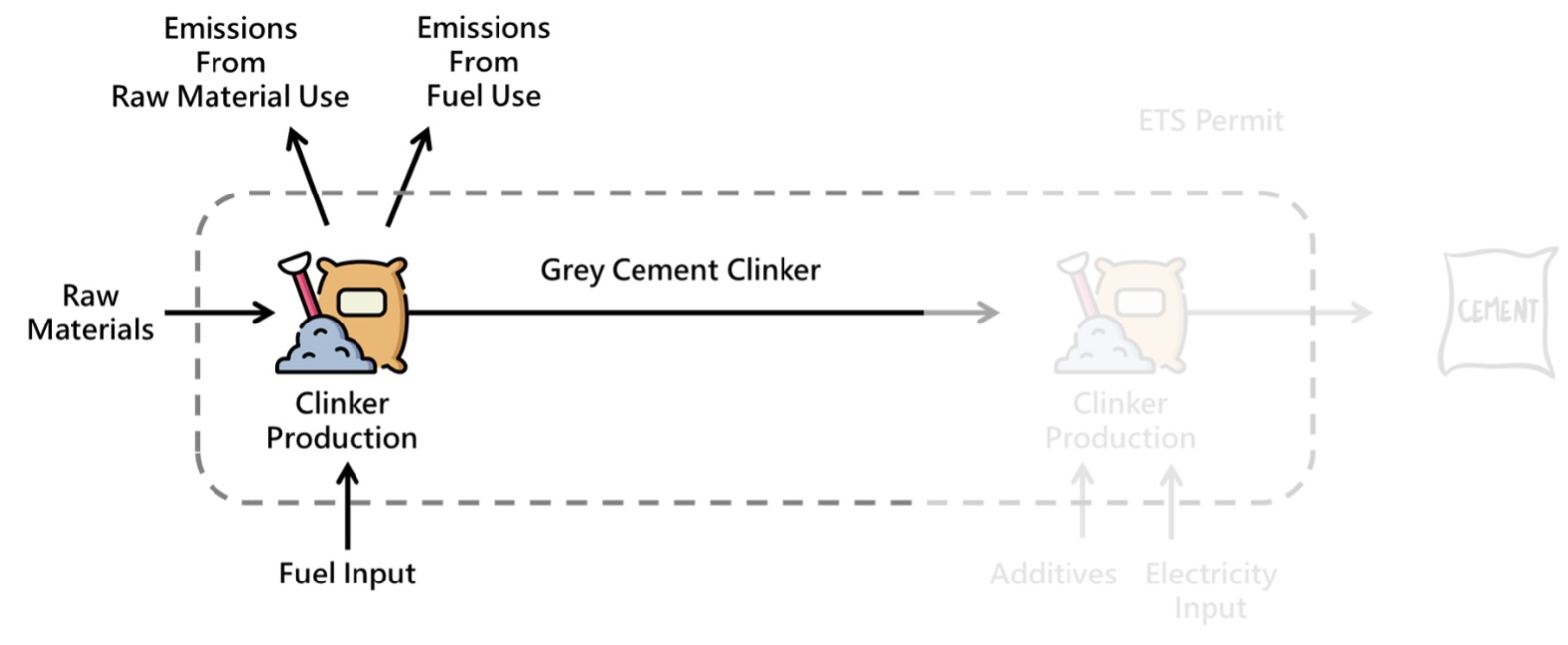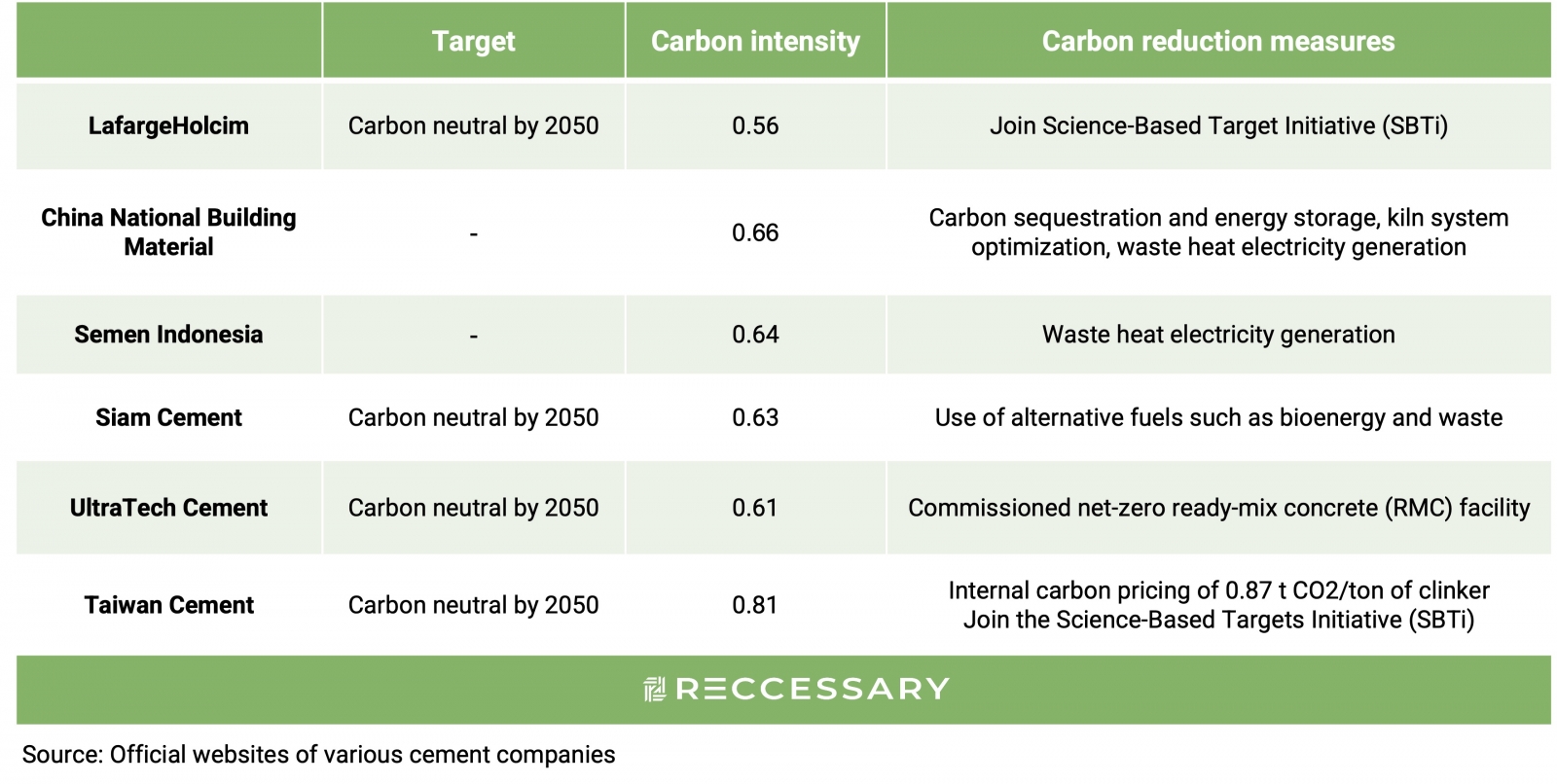Global carbon emissions from the cement industry
Carbon dioxide emissions from the chemical process of producing cement and concrete in the cement industry account for 7% to 8% of global emissions. In the Global Cement and Concrete Association (GCCA) conference attended by 40 of the world's largest cement manufacturers and 80% of cement companies outside of China, a detailed roadmap was issued to set out the path for achieving decarbonization of the cement industry by 2050, with the goal aligned with the Paris Agreement to keep the temperature increase within 1.5°C.
EU
The carbon pricing standard of the EU Emissions Trading System (EU-ETS) is applied.
EU-ETS Phase 3 (2013-2020): 766 kg CO2 / tonne of clinker
China
The total carbon dioxide emissions of China's cement industry in 2020 is about 1.466 billion tonnes.
Carbon dioxide emissions from producing one ton of clinker: 865.8 kg.
Carbon dioxide emissions from producing one ton of cement: 616.6 kg.
Calculation scope
Calculation scope of the EU:
Production emissions include emissions from the calcination process, fuel burning that provides heat (including heat loss) and clinker firing in the rotary kiln in the production process. The system boundary does not include carbon emissions from electricity consumption of products.

Calculation scope of China:
Carbon emissions are calculated to the clinker segment.
Calculation scope of Taiwan:
Carbon emissions calculation covers the cement segment.
Carbon reduction plans of cement companies

Carbon intensity: Tonnes of CO2 generated by per tonne of cementitious product
*Boundaries of a carbon footprint in different countries will lead to a large gap in carbon intensity.
Carbon reduction measures of the cement industry
Calcium carbonate looping technology
The technology uses calcium oxide (CaO) as an adsorbent to capture carbon dioxide (CO2) emitted by factories and form calcium carbonate (CaCO3) which is then decomposed in a calciner at high temperature to become calcium oxide and high-purity carbon dioxide; calcium oxide produced can be used to capture carbon dioxide. After calcium oxide becomes inactive, it can be transported back to the cement factory as the raw material, achieving suitability.
Electricity generation from waste heat
The waste-heat-to-power technology recycles a large amount of waste heat discharged from the front end and back end of the cement kiln through the waste heat boiler. Superheated steam and saturated steam are generated to drive the turbine generator to perform the conversion of thermal energy and mechanical energy, which drive the generator to generate electricity for supplying electricity used in the cement production.
Alternative raw materials/clinker/fuels
- Alternative raw materials include desulfurized gypsum, coal ash, slag, carbide slag, coal gangue, and nickel slag.
- Alternative clinker includes ore fines, coal fines, and nickel slag fines.
- Alternative fuels include biofuels (e.g., waste wood chips, bark, rice straw, rice husk and other agricultural wastes), advanced biofuels (e.g., waste tires, solid recovered fuel (SRF) and refuse derived fuel (RDF), waste rubber products and sludge, etc.)
Sources
- Businesswire
- EU Community-wide Implementation Measures (CIMs) Annex 1, point 2
- LafargeHolcim
- Taiwan Cement